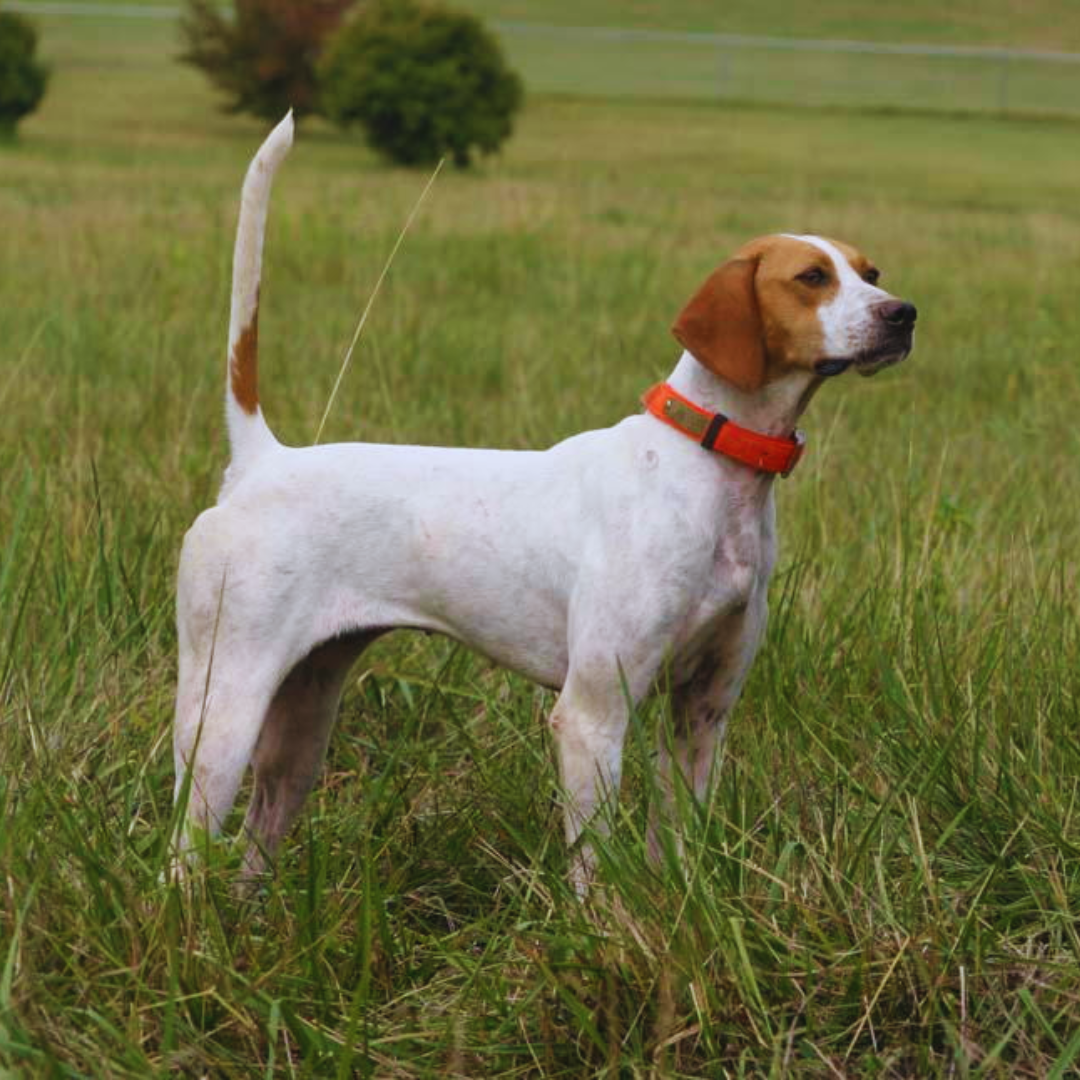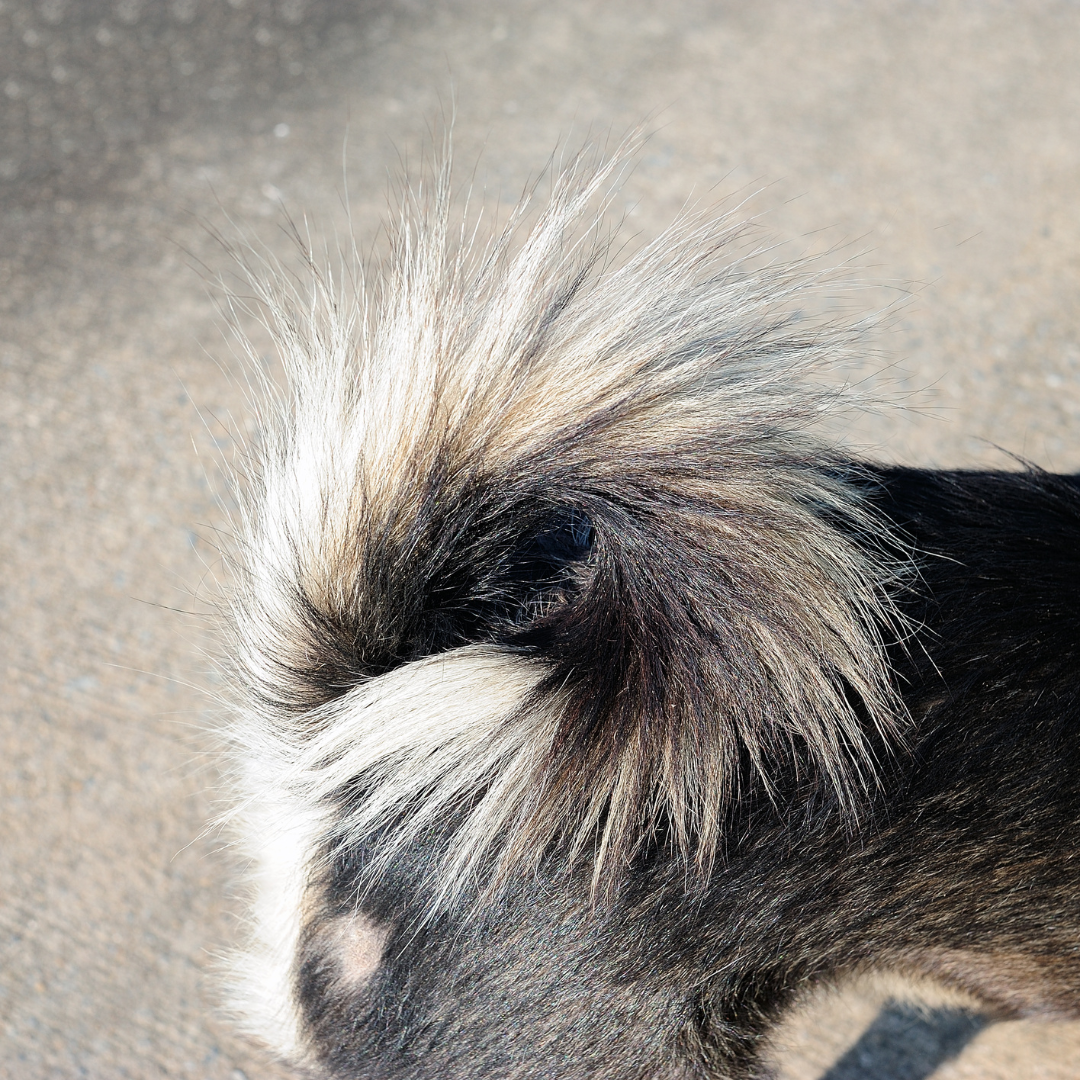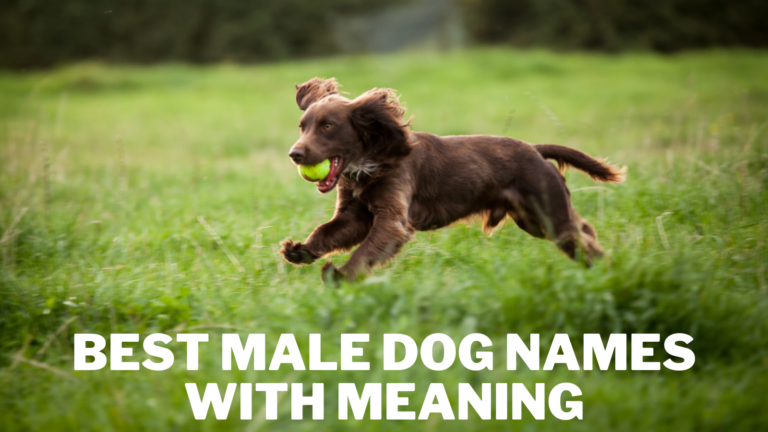Understanding Dog Tail Language

Understanding Dog Tail Language
Dog tail language is a fascinating and often misunderstood aspect of canine behaviour. While many people believe that a wagging tail always indicates a happy dog, the truth is that a dog's tail position and movement can provide a wealth of information about its emotional state and intentions.
Understanding your dog's tail language can help you better communicate with them, strengthen your bond, and prevent potential conflicts with other dogs.
In this blog, we'll explore the nuances of dog tail language, from the different types of tail wags to the position of the tail base and everything in between.
In this article, we'll explore the intricacies of dog tail language, from the different types of tail wags to the position of the tail base and everything in between.
By the end of this article, you'll have a deeper appreciation for your dog's unique communication style and better understand and respond to their needs.

What Is Dog Tail Language?
Dog tail language is a fascinating and complex form of nonverbal communication used by our canine friends to express themselves.
It's a way for dogs to convey their emotions, needs, and intentions without using words. By paying attention to a dog's tail position and movement, we can gain valuable insights into their emotional state and better understand their behaviour.
A dog's tail can communicate emotions, from confidence and assertiveness to fear and anxiety. Tail wagging is the most well-known aspect of dog tail language.
Still, the wag's speed, height, and direction can indicate different excitement levels, arousal, or even aggression. Understanding dog tail language is essential for building strong bonds with our furry companions and promoting their well-being.
A dog's tail's various postures and movements are used to communicate in dog tail language. Dogs communicate many emotions, desires, and intentions through their tails.
For instance, a dog with a high tail with a slight curl at the end usually has a self-assured and strong attitude. On the other hand, a dog may feel afraid or submissive if their tail is tucked low between its legs.
Although tail wags are frequently linked to joy and enthusiasm, other emotions can also be expressed depending on the height and speed of the wag.
A gradual, soft wag may indicate friendliness and relaxation, whereas a quick, high wag may indicate excitement or even arousal. Attention to a dog's tail language is critical to comprehend a dog better.

Understanding Dog Tail Language
Dogs are known for their ability to communicate with us in various ways, from barks and whines to body language. One of the most fascinating aspects of dog communication is their use of tail language.
By observing the position and movement of a dog's tail, we can gain valuable insights into its emotional state, intentions, and needs.
While many believe that a wagging tail always indicates a happy dog, tail language is much more complex. Understanding dog tail language can help us better communicate with our furry friends, strengthen our bond, and even prevent potential conflicts with other dogs.
Dogs use their tails to communicate to express their emotions, intentions, and social status. Here are some common tail positions and what they may mean:

1. High And Stiff
When a dog holds, their tail high and stiff indicates its confidence and readiness to take action. Dogs who hold their tails in this position are often alert, curious, or excited about something in their environment.
They may be looking for potential threats or opportunities, ready to take action if needed. This tail position is often seen in dogs exploring their surroundings, such as walking in a new park or encountering new people or animals.
However, it's important to note that a high and stiff tail can indicate dominance or aggression in some situations, especially if the dog's body posture is tense or stiff.
Overall, a high and stiff tail is a powerful visual cue that tells much about a dog's mindset and readiness to engage with its surroundings.

2. Low And Tucked
When a dog's tail is held low and tucked between its legs, it indicates that they are experiencing fear, anxiety, or submission. Dogs who are feeling threatened or uncomfortable may adopt this tail position as a way of protecting themselves or conveying their unease.
This tail position is often seen in dogs encountering something or someone new or unfamiliar, such as meeting new people or encountering other animals.
It's essential to approach a dog with a low and tucked tail with caution and respect, as they may feel vulnerable and need time to feel safe and secure.
It's also important to note that a dog's tail position is not the only indicator of its emotional state, and it's essential to consider its overall body language and behaviour when interpreting its signals.

3. Wagging
The tail wag is perhaps the most well-known form of dog tail language, but it's important to understand that not all wagging tails indicate a happy dog.
The wag's speed, direction, and height can provide important clues about a dog's emotional state. For example, a slow, low wag may indicate insecurity or uncertainty, as the dog is not fully confident in their environment.
On the other hand, a fast, wide wag may indicate excitement or joy, as the dog is experiencing positive emotion. It's also important to note that the direction of the wag can provide further insight into a dog's emotional state.
For example, a wag to the right may indicate positive feelings, while a wag to the left may indicate negative feelings. Understanding the nuances of tail wagging can help us better understand our dog's emotional state and respond accordingly.
If a dog is wagging their tail but showing other signs of stress or discomfort, it may be a sign that they are not feeling happy or content.

4. Curled
When a dog's tail is curled tightly around its body, it's a clear sign that they are feeling cautious or defensive. Dogs who are feeling threatened or uncertain may adopt this tail position as a way of protecting themselves or conveying their discomfort.
This tail position is often seen in dogs feeling nervous or anxious, such as when encountering loud noises, unfamiliar people, or animals.
It's important to approach a dog with a tightly curled tail with caution and respect, as they may feel on edge and perceive any sudden movements or loud noises as a threat.
It's also important to note that a dog's tail position is not the only indicator of its emotional state, and it's essential to consider its overall body language and behaviour when interpreting its signals.

5. Relaxed
When a dog's tail is relaxed, it typically indicates that they feel calm, content, and comfortable in their surroundings. A relaxed tail will be neither too high nor too low, and it may have a gentle, slow wag to indicate a happy or content mood.
This tail position is often seen in relaxed and comfortable dogs, such as at home with their owners or playing with familiar dogs.
A relaxed tail can also indicate that a dog is feeling curious and exploring their surroundings, as they are not feeling threatened or defensive.
A relaxed tail is a positive sign indicating that a dog feels comfortable and at ease. If a dog displays other signs of stress or discomfort, it may be a sign that they are not as relaxed as their tail suggests.

6. Breed-Specific Tail Language
It's important to remember that dogs may have breed-specific tail positions due to their anatomy and breeding history. For example, Greyhounds and Whippets are bred for speed and agility, so they often hold their tails low and tucked when relaxed.
This tail position helps to reduce wind resistance and improve their speed, and it's not necessarily an indication of fear or anxiety.
Similarly, breeds like Siberian Huskies and Alaskan Malamutes, who are adapted to cold environments, may carry their tails in a relaxed, curled position to protect their tails and hindquarters from the cold.
This tail position is not a sign of defensiveness or anxiety but a functional adaptation to their environment. When interpreting a dog's tail language, it's important to consider their breed and anatomy to avoid misinterpreting their behaviour.
By understanding the unique tail positions of different breeds, we can better communicate with our furry friends and build stronger bonds based on trust and understanding.

7. The Position Of The Tail Base
The position of the tail base can be a significant indicator of a dog's emotional state. A tail held high with the base slightly tucked may indicate a confident but not aggressive dog, as they are ready to take action but not looking for a fight.
This tail position may occur in alert, curious, or excited dogs but is not necessarily aggressive. On the other hand, a tail held high with the base straight up may indicate a more dominant or assertive dog. This tail position may be seen in dogs feeling confident, assertive, or looking to establish dominance over others.
It's important to consider other factors, such as the dog's overall body language and behaviour when interpreting the tail base position to understand a dog's emotional state accurately.
By paying attention to the base of a dog's tail, we can better understand their behaviour and improve our ability to communicate with them effectively.

8. The Duration Of The Tail Position
The duration of a dog's tail position can also provide important information about its emotional state. A dog holding their tail in a particular position for an extended period may indicate a more persistent emotional state.
For example, a dog who holds its tail low and is tucked for a long time may be experiencing fear or anxiety. On the other hand, a dog who has its tail high and stiff for a prolonged period may feel confident and alert.
It's important to understand the duration of a dog's tail position and other factors, such as their body language and behaviour, to understand their emotional state accurately.
By paying attention to the duration of a dog's tail position, we can better understand their emotions and respond appropriately to their needs.

9. Tail Docking
Tail docking is a controversial practice often done for cosmetic reasons or to prevent tail injuries in certain working dog breeds.
However, it can negatively affect a dog's physical and emotional well-being. When a dog's tail is docked, it may have limited ability to communicate through tail language, making it more difficult for humans to understand their emotional state.
In addition to the limitations on tail language, dogs who have undergone tail docking may experience pain or discomfort due to the procedure, which can also affect their behaviour and emotional state.
It's important for dog owners and handlers to be aware of these potential effects and to use other body language cues to understand their dog's emotions and needs.
We can still gain important insights into a dog's emotional state and provide appropriate care and support by considering ear position, vocalizations, and facial expressions.

10. Tail Thumping
Tail thumping is another aspect of tail language that can provide important insights into a dog's emotional state. When a dog thumps their tail, they are usually trying to communicate something to their owner or other dogs.
Sometimes, thumping can indicate excitement or happiness, especially if the tail wags rapidly and the dog shows other signs of joy, such as jumping or barking.
However, tail thumping can also indicate frustration or annoyance, especially if the thumping is slow and deliberate. For example, a dog thumping its tail while standing by the door may mean that they want to go outside. A dog that is thumping its tail while lying on the ground may indicate that they are tired or bored and want to play.
As with other aspects of tail language, it's important to pay attention to the context of the thumping and to consider other body language cues when interpreting what your dog is trying to communicate.

11. Tail Language During Grooming
Paying attention to a dog's tail language during grooming is important, as it can be a key indicator of their emotional state. Dogs feeling anxious or uncomfortable may display a tucked tail or a tail held close to their body to protect themselves.
On the other hand, dogs feeling calm and relaxed may hold their tail in a more neutral position with a gentle wag. It's important to take things slowly during grooming sessions and to be mindful of your dog's body language.
If you notice your dog's tail position changing, take a break and give them a chance to relax before continuing. Being attuned to your dog's tail language can help make grooming a more positive experience for them.

12. Tail Communication In Multi-Dog Households
When living in multi-dog households, tail language can be a crucial communication between dogs. For instance, a dominant dog may hold their tail high to assert dominance over a submissive dog, while a submissive dog may tuck their tail between their legs as a sign of submission.
Dogs may also use their tails to signal playfulness, with a relaxed and gently wagging tail being a common indicator. Pay attention to your dogs' tail language when interacting with each other to better understand their social dynamics and intervene if necessary. Misreading tail language can lead to misunderstandings and conflicts between dogs.

13. Tail Language During Play
During play, a dog's tail can provide important clues about its emotional state, but it can also be in constant motion, making it difficult to interpret.
A relaxed tail and open mouth are signs of a happy and playful dog. In this case, the tail may wag rapidly and even have a slight curve.
On the other hand, a stiff tail or a tail held high and still, coupled with a closed mouth, may indicate that the dog is feeling overwhelmed or uncomfortable during play.
These signals suggest the dog is not enjoying the interaction and may need a break. Paying attention to these cues and adjusting the play accordingly to ensure that all dogs involved have a positive experience is important.

14. Tail Held Straight Out And Stiff
A dog holding its tail straight out and stiff indicates high alertness and potential for aggression. This tail position is often seen when a dog feels threatened or defensive and is ready to protect themselves or their territory.
Accompanying body language may include the tall and tense dog with its ears forward and its eyes fixed on the perceived threat. This is a sign that the dog is ready to react if necessary.
It's important to cautiously approach a dog displaying this type of tail position and respect their space. Trying to interact with or touch the dog may escalate its defensive behaviour and lead to aggression.
It's best to give the dog their space and avoid any actions that may be perceived as threatening. If you're concerned about your dog's behaviour, consult a professional dog trainer or behaviourist to address any underlying issues.

Conclusion
In conclusion, understanding dog tail language can be valuable for communicating with and understanding our canine companions.
A dog's tail position, wagging speed and direction, and even the base of the tail can provide important information about their emotional state, whether they are feeling confident and content, anxious and fearful, or playful and excited.
However, it's important to consider breed-specific tail positions, tail thumping, and other body language cues to understand a dog's emotional state.
By paying attention to our dog's tail language and other forms of communication, we can build stronger relationships with them and provide them with the care and attention they need.
I trust you enjoyed this article on Understanding Dog Tail Language. Please stay tuned for more blog posts to come shortly. Take care!
JeannetteZ
>>>Please click here to read my article on A Full Overview Of Dogs And Their Activity<<<
My #1 Dog Training Recommendation
Your Opinion Is Important To Me
Thoughts? Ideas? Questions? I would love to hear from you. Please leave me your questions, experience, and remarks about this article on Understanding Dog Tail Language in the comments section below. You can also reach me by email at Jeannette@Close-To-Nature.org.
You might also enjoy these blog posts:
How Do I Know If My Dog Is Smart?
Barking Dog Solutions – Ultimate Training






